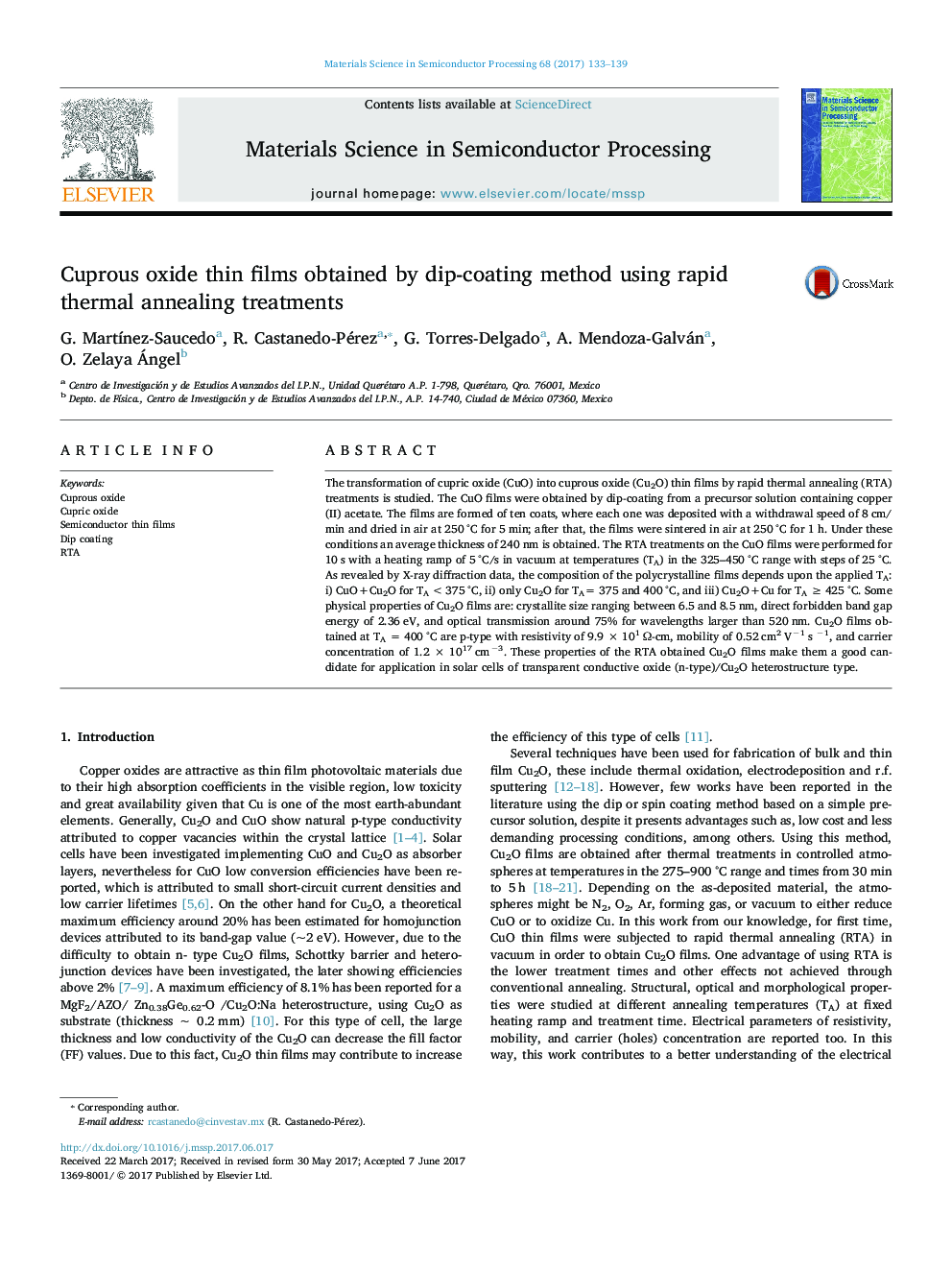| Article ID | Journal | Published Year | Pages | File Type |
|---|---|---|---|---|
| 5006024 | Materials Science in Semiconductor Processing | 2017 | 7 Pages |
Abstract
The transformation of cupric oxide (CuO) into cuprous oxide (Cu2O) thin films by rapid thermal annealing (RTA) treatments is studied. The CuO films were obtained by dip-coating from a precursor solution containing copper (II) acetate. The films are formed of ten coats, where each one was deposited with a withdrawal speed of 8 cm/min and dried in air at 250 °C for 5 min; after that, the films were sintered in air at 250 °C for 1 h. Under these conditions an average thickness of 240 nm is obtained. The RTA treatments on the CuO films were performed for 10 s with a heating ramp of 5 °C/s in vacuum at temperatures (TA) in the 325-450 °C range with steps of 25 °C. As revealed by X-ray diffraction data, the composition of the polycrystalline films depends upon the applied TA: i) CuO+Cu2O for TA < 375 °C, ii) only Cu2O for TA= 375 and 400 °C, and iii) Cu2O+Cu for TA ⥠425 °C. Some physical properties of Cu2O films are: crystallite size ranging between 6.5 and 8.5 nm, direct forbidden band gap energy of 2.36 eV, and optical transmission around 75% for wavelengths larger than 520 nm. Cu2O films obtained at TA = 400 °C are p-type with resistivity of 9.9 à 101 Ω-cm, mobility of 0.52 cm2 Vâ1 s â1, and carrier concentration of 1.2 à 1017 cmâ3. These properties of the RTA obtained Cu2O films make them a good candidate for application in solar cells of transparent conductive oxide (n-type)/Cu2O heterostructure type.
Related Topics
Physical Sciences and Engineering
Engineering
Electrical and Electronic Engineering
Authors
G. MartÃnez-Saucedo, R. Castanedo-Pérez, G. Torres-Delgado, A. Mendoza-Galván, O. Zelaya Ángel,
